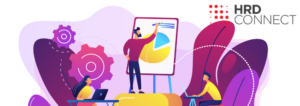Dave Ulrich on L&D priorities for today’s professionals
- 6 Min Read
HR luminary Dave Ulrich outlines a series of steps leaders should follow to execute a successful L&D strategy.
- Author: Dave Ulrich
- Date published: Jun 29, 2021
- Categories

Learning matters more than ever in today’s volatile, changing, uncertain business world —and this has major impact for learning and development (L&D) specialists. With the increasing pace of social, technological, economic, political, environmental, and demographic changes, organisations and individuals haveto disrupt (drastically change) themselves to stay current.
Over our thirty-year study of HR competencies, my colleagues and I find that approximately 30 to 40 percent new competencies emerge every four or five years; in my personal training, I seek about 20 to 25 percent new material every two years to respond to the pace of change. To enable this type of disruption, an organisation’s learning agenda should be less about what is taught and more about the impact of what is taught. The desired outcome of learning is to access ideas with impact, to discover innovative and fresh approaches to emerging opportunities, and to ensure that change happens.
So how does a learning agenda keep organisations and individuals on track for success? Let me suggest that learning should respond to three questions:
- WHY: Why do investments in learning create more value?
- WHAT: What are some of the emerging learning strategies and questions?
- HOW: How can learning be more effective?
The answers to these three questions highlight ten trends in learning that deliver value to those who participate in learning events, business organisations that sponsor learning, customers who seek new and innovative products and services, and investors who seek higher returns for their investment.
WHY: Why do investments in learning create more value?
Understand the emerging context of work
Learning does not occur in a vacuum. The business context requires learning about the social, technical, economic, political, environmental, and demographic trends that shape business.
Learners should appreciate and anticipate these trends so that they can respond to them, keeping their organisations relevant to current industry needs. L&D specialists understand context from predictive analytics and statistics, and from observing lead indicators about what might happen.
Identify how learning is a source of organisational value
Learning is not about what is taught but the value it creates for those who are taught. So L&D professionals should carefully tailor learning experiences to deliver desired value to the carefully identified key stakeholders of learning (participants, organisations, customers, investors). For each learning experience (e.g., teaching module, coaching, job assignment), L&D specialists can ask “so that” to link the activity to the value it should create.
WHAT: What are some of the emerging learning strategies and questions?
Where does learning occur?
We have found that 50 percent of learning occurs through on-the-job experience (job assignments, projects, coaching, mentoring); 30 percent of learning occurs through education experiences where participants engage in the learning—they are not just tourists; and 20 percent of learning occurs through experiences outside of work (parenting, volunteer service, life experience). L&D professionals can access a mix of learning opportunities.
Who attends and who teaches?
Who attends training determines who gets value. Formal learning experiences can be intended for the individual participant but could also be for a team, customers, or investors. Who delivers training impacts how it is received.
Delivery may be self-taught (e.g., through technology), by experts (e.g., faculty), by line managers, or by external stakeholders (e.g., customers or investors). L&D specialists who manage the mix of who attends and who teaches based on needs and the targeted value increase learning impact.
What are learning outcomes?
Learning outcomes can be individual focused (how I improve) or organisation focused (how we improve). In our research reported in Victory Through Organisation, we found that organisation-focused learning (e.g., improve the culture, capabilities, or systems) has four times the impact on business results than individual-focused learning (e.g., improve personal skills). But L&D specialists who mix personal learning with project learning have the most impact.
How does learning occur?
An evolution of learning pedagogy flows from presentations to case studies of other companies to facilitated discussions to action learning to learning solutions. Ultimately, learning solutions start with the challenges a learner faces and offers the learner insights on how to respond. L&D specialists need to focus less on what they know and more on what their audience needs to know to improve.
How do we transfer learning to work?
Transferring learning ideas across a boundary (from classroom to workplace) is always demanding. But to create sustainable learning, L&D specialists need to focus on transfer of knowledge skills from one setting to another. This can be done by focusing training on real business challenges, anticipating challenges to implementation of ideas, having coaches follow up, and so forth.
HOW: How can learning be more effective?
Leverage technology
In today’s world, technology enables learning. But a pervasive trap is to just use technology as an efficient learning tool (e.g., online learning); rather, technology should be used to create learning communities where learners share insights and experiences.
Social learning networks move learning beyond classrooms to work settings. L&D specialists can also use blended learning to increase the impact of learning.
Create accountability
L&D specialists are architects who build blueprints for learning. Line managers are the contractors who build a house and have responsibility to make learning happen.
But the ultimate accountability for learning rests with the individual employee who is the resident of the house. L&D specialists should continually encourage personal agency and accountability for learning.
Measure learning impact
Without measurement, learning outcomes are dreams not realities. But the right measures are not about activity (who or how many attended), but ultimately about business impact. Learning experiences create value for others, and measures should reflect that value.
Conclusion
Change happens, even extreme change called disruption. Learning creates value by helping individuals and organisations anticipate and respond to change. By responding to the three questions (why, what, and how) with the ten learning trends, L&D specialists ensure that their learning efforts respond to the pace of change and have real impact.
How do my ten trends reflect your experiences?









